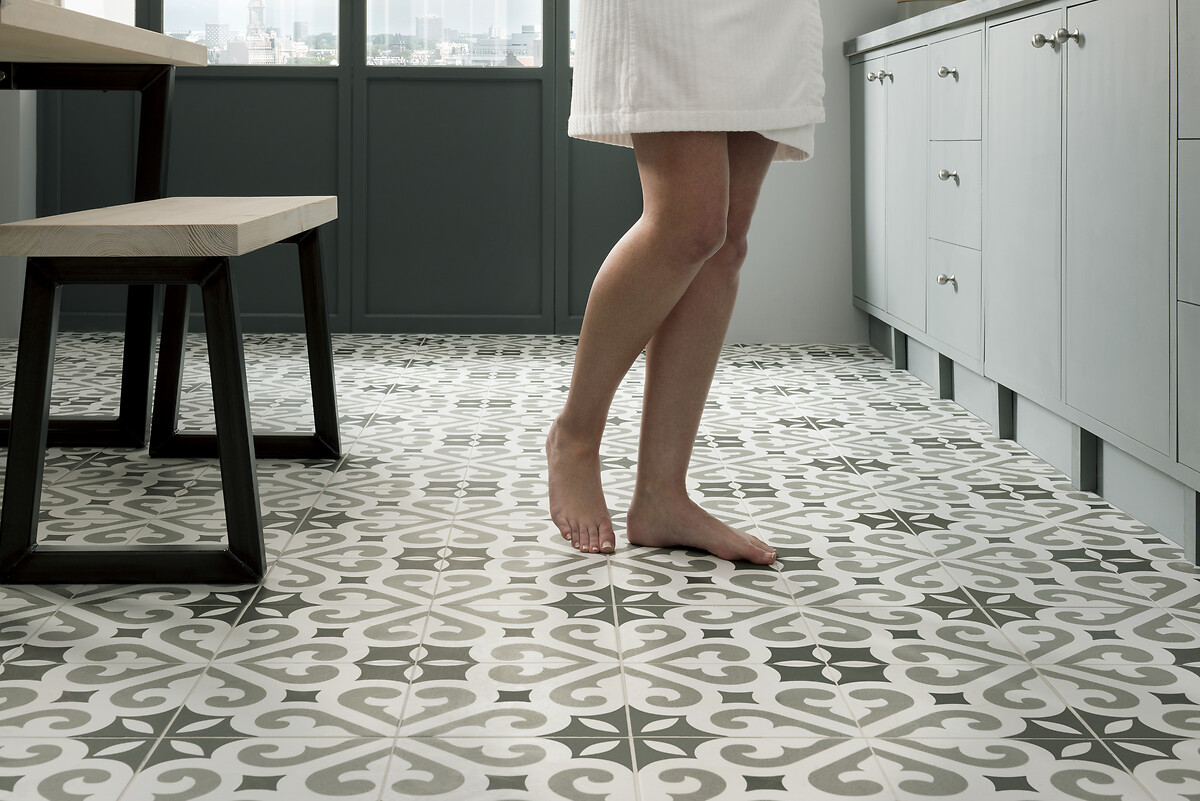Posted on Date 20th Dec 2023
What are the different types of underfloor heating?

Underfloor heating can seem like a bit of luxury. However, if youre already thinking of revamping your bathroom or kitchen in the near future, it definitely pays to consider underfloor heating as a cost-effective alternative to more traditional heating systems.
This quick guide will tell you everything you need to know about the different underfloor heating systems and their various pros and cons.
What is underfloor heating?
Underfloor heating uses whats known as radiant heat to rise through the floor to heat a room. There are two main types of underfloor heating systems.
The first are wet systems that use a system of pipes connected to your central heating. These pipes carry hot water, giving out heat as they go. And, because they tend to distribute heat more evenly than radiators, they use water at a lower hear than a radiator make your boiler more efficient.
The second are dry systems. These use electricity to heat your room and are comprised of a system of mats or wires running under the floor in your home. The dry systems tend to be the most popular as they are relatively simple to install and generally works out to be the most cost-effective option, especially when purchased as a bundle with a thermostat.

The pros and cons of underfloor heating
There are pros and cons to both systems, which weve outlined below to help with your research.
The pros
Greater efficiency
Underfloor heating uses radiant heat to distribute warmth around the room, rather than just heating the air within the room (as would the case with traditional heating systems)
Cheaper to run
Underfloor heating is cheaper to run than conventional gas systems due to their energy efficient technology, helping to drive down your energy bills
Easy to fit
Underfloor heating is relatively easy to fit and can be done as part of a bathroom or kitchen revamp. A qualified electrician should always connect the system before use
Saves space
Underfloor heating does away with radiators and piping, creating extra space in your home that can be used for other purposes
And the cons
The expense
If you are not planning on a re-vamp anytime soon of your bathroom or kitchen floor, then removing your existing tiles to lay underfloor heating can be an unnecessary expense
Layout of your room
Underfloor heating systems can restrict what you can place on the floor as certain fixtures and fittings cant sit on top of underfloor heating
Installation
If youre thinking of a wet system, then you will need to pay for a professional to fit rather than try doing it yourself
Is underfloor heating right for me?

There is a cost involved with installing underfloor heating so we would always advise fitting underfloor heating as part of a new bathroom or kitchen installation.
But the main benefit to underfloor heating is comfort and convenience it brings to everyone in your home and the fact that it heats a room far more evenly than traditional heating systems. Its also a great way of de-cluttering a room, removing the need for bulky floor or wall mounted radiators as well as all those pesky pipes.
Need more information?
If you have any questions regarding selecting the right tiles for your home, then feel free to contact our Customer Services team using our web chat facility.




